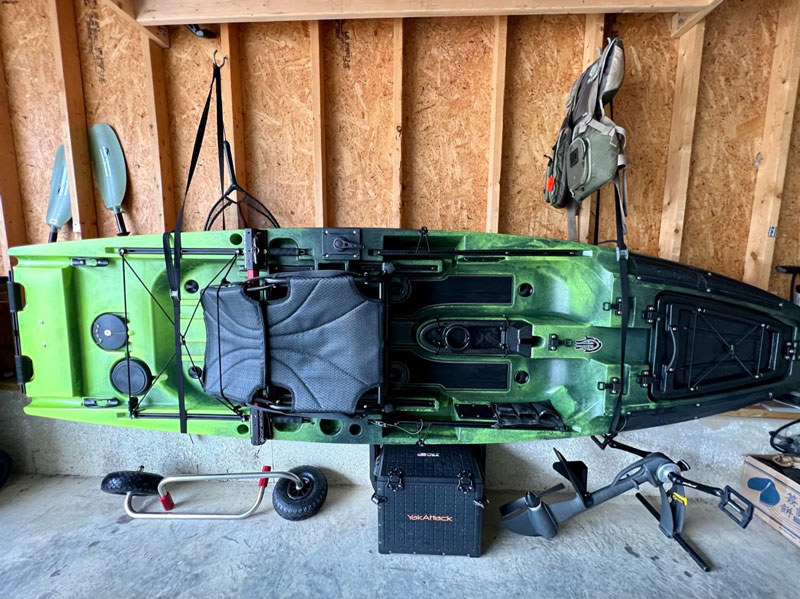As an angler my biggest asset for a successful outing is my kayak. Taking proper care will insure years of fun fishing on the water. Whether you’ve invested a few thousand dollars or a few hundred in your kayak, you’ll want to follow these simple steps to take care of it.

Before I load up my kayak for a day on the water I give it a good looking over. I look for dirt buildup, spider webs, wear, and insects that may have taken up residence while stored. There’s nothing like a spider crawling up your leg while taking that first cast of the day. I wipe down and brush any dirt off before I load up and also take note of any minor wear. After a day of fishing I repeat the process. Once home I will spray my kayak off with water to remove any buildup, fish and bait debris, dirt, sand, or mud that I may have come in contact with. I also use a mild soap to clean the boat every other trip. Particularly important is spraying off the kayak and gear after each outing on brackish or salt water to avoid any possible corrosion.
Where you store your kayak is critical. It should be out of direct sunlight to avoid any warping, bleaching of colors, and UV damage to the hull, hatch covers, and the seat. I store my kayaks in my garage. One kayak I stand on end, setting it on a foam pad and strapping it to the wall. This is my secondary vessel, and the square transom allows me to store it this way; standing it on end will avoid any warping and misshaping of the hull, as it isn’t used often. Avoiding any long-term storage of your kayak on top of your vehicle is a good idea, too, because plastic kayaks sitting out in the sun and strapped to your car top can become deformed. The other, my primary fishing boat, I hang on a wall with straps. It comes off the wall almost daily so warping from long-term storage isn’t a problem.
Not everyone has a shed or garage to store a kayak, so if you must store it outdoors you’ll want to keep it covered with a tarp. Keep it out of the direct sunlight and free of any yard debris, snow or rain. To avoid mold and mildew make sure the kayak is dry before covering it up. A tarp will also keep any living creatures out that may want to set up residence (except maybe those spiders).
Keep up on your maintenance by regularly giving your kayak a wash with a mild soap to avoid staining from muck, fish and bait blood etc. If applicable check your rudder and steering system, and/or skeg, as you’ll want to be sure that there isn’t any sand, dirt, or weeds hung up in them. Check your seat for wear and check its mountings, too. If you have any hatches check for wear on hinges, and if you have rubberized hatch covers look for cracking and other wear that may require a hatch replacement. If you have a pedal system you’ll want to follow the manufacturer’s maintenance instructions to keep up with any wear and tear.
Keeping your kayak clean and up to date on its maintenance will extend the life of your investment, plus provide many happy years of fishing. Remember, a cast not taken is a fish not caught — so jump aboard your kayak and take that cast.
- By Eric Packard